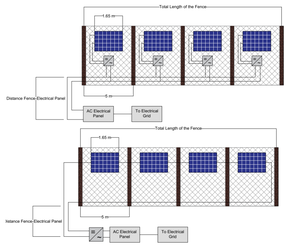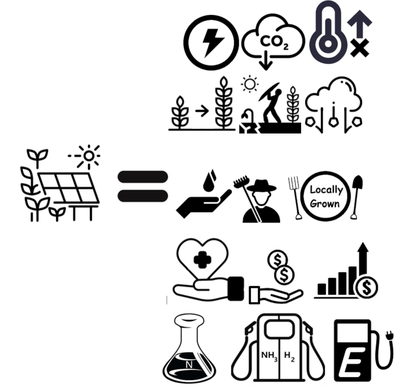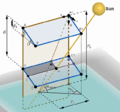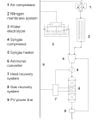
Despite the benefits and the economic advantages of agrivoltaics, capital costs limit deployment velocity. One recent potential solution to this challenge is to radically reduce the cost of racking materials by using existing farm fencing as vertical photovoltaic (PV) racking. This type of fenced-based PV system is inherently electrically challenging because of the relatively long distances between individual modules that are not present in more densely packed conventional solar PV farms. This study provides practical insights for inverter selection and wire sizing optimization for fence-based agrivoltaic systems. Numerical simulation sensitivities on the levelized cost of electricity (LCOE) were performed for 1) distance from the fence to the AC electrical panel, 2) inverter costs, and 3) geographic locations. The results showed that microinverters had better performance when the cross-over fence length was under 30 m or when the system was designed with less than seven solar PV modules, whereas string inverters were a better selection for longer fences. The cross-over number of modules depends significantly on the cost of the inverters, which is a parameter that influences the system's design. The capital costs for a fence retrofit are far less than for any form of conventional PV racking. In addition, the LCOE of the vertical fencing solar agrivoltaic system can be competitive with conventional ground-mounted solar PV for the niche of farmers. Especially, when they are located between the latitudes of 10° and 50° in either the northern or southern hemisphere, and coupled with their ancillary benefits they represent a great alternative for conventional PV systems.
- For Data and Simulation Files: Check the Project OSF Page
Keywords[edit | edit source]
agrivoltaic; inverter; fencing; vertical;Sustainable development; Open-source; Photovoltaic; solar energy; balance of systems; renewable energy; do-it-yourself
See also[edit | edit source]
- The potential for fencing to be used as low-cost solar photovoltaic racking
- To Catch the Sun
- 3-D printable photovoltaic module spacer
- Open source DIY solar photovoltaic racking
- Circular PV panel

- Coal with Carbon Capture and Sequestration is not as Land Use Efficient as Solar Photovoltaic Technology for Climate Neutral Electricity Production
- Dual use of land for PV farms and agriculture literature review
- sheep
- Israeli white plastic reflectors
- A Farmer's Guide to Going Solar (NREL)
- German guidelines: https://www.ise.fraunhofer.de/content/dam/ise/en/documents/publications/studies/APV-Guideline.pdf
- 2021 review
- Miskin, C.K., Li, Y., Perna, A., Ellis, R.G., Grubbs, E.K., Bermel, P. and Agrawal, R., 2019. Sustainable co-production of food and solar power to relax land-use constraints. Nature Sustainability, 2(10), pp.972-980.
- Retrofitting solar parks for agrivoltaics
- Shading PV
- Alexis' talk at American Solar Grazing Association2021
In the News[edit source]
- Agrivoltaics: solar energy + better crops Climate and Nature
- Why solar power and farmers’ fields could be the perfect combination TVO
- Solar farms and sheep show the makings of a clean energy classic duo Business Renewables
- Agrivoltaics charge up St. Albert-area farms St Albert Gazette
- Sheep, solar and crops. How some Alberta farms are creating ideal growing conditions Western Wheel
- Sheep, solar and crops. How some Alberta farms create ideal growing conditions Voxpopuli
- Protein bars from recycled plastic bottles? An indoor farm on wheels? Western prof gets innovative with green tech Toronto Star
- 加拿大环保狂人回收塑料瓶制成蛋白棒 还有可移动室内农场!? Lahoo
- Solar
- Papers
- Projects
- Agrivoltaics
- Solar power
- Solar energy
- Photovoltaics
- Sustainable development
- Agriculture
- SDG02 Zero hunger
- SDG07 Affordable and clean energy
- SDG09 Industry innovation and infrastructure
- SDG11 Sustainable cities and communities
- FAST Completed
- Electrical engineering
- Energy
- Mechanical engineering
- Wood
- Renewable energy
- DIY




































